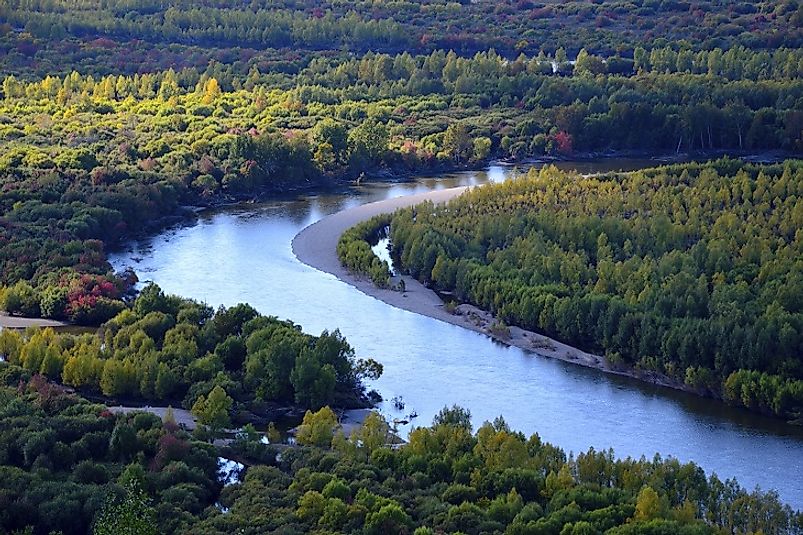The Argun River

5. Description
The Argun flows for a total of 1,007 miles between Zabaykalsky Krai in Russia and Inner Mongolia of China. Its name simply means "wide" in the Mongolian language, and the Argun is also sometimes known by its second, alternative name of the Hailar River. More than half of the river's distance runs along between the Russian and Chinese border, doing so for 587 miles, and ends as it merges with the Shilka River to form the Amur River, which separates Northeast China and Far East Russia. The river originates from the Kherlen River, 121 miles from Ulaanbaatar, Mongolia, and flows freely amidst a wide valley. The Argun has additional water supplies from rainwater, such as that from Hulun Lake's overflow during the rainy season.
4. Historical Role
In “The History of the Mongols and Tartars,” the banks of the Argun River are mentioned as being the location of the home of the Prince of the Kalka Mongols after they were thrown out of China in 1368 by the founder of the Ming dynastic family, Hong Vu. The Kalkas then settled back in Mongolia, where, according to the same book, “they returned to the roving and sordid life of their ancestors.” It is said that the Kalkas took their tribe name from the Kalka River, which originates from the Suelki Mountain. After the Ming rule of China ended, the Manchus took over, and they also made the Argun River their border with Russia.
3. Modern Significance
In both 1692 and 1719, Russia tried to secure its Siberian border along the Chinese-occupied Mongolia. Tzar Peter I sent his diplomats to China to set the borders of the two countries, but nothing came out of these actions. Then, in 1727, Count Raguzinskii was able to make an agreement with the Chinese government with the signing of the Russo-Chinese Kiakhta Peace Treaty. This treaty gave Russia security over its borders, and opportunities for further explorations of southern Siberia where nomadic tribes lived. However, Russia was not able to utilize the Amur River as a commercially viable waterway. Russia was, however, able to extend its territories further south of the Argun River to include much land owned by tribesmen, as well as that across the Bering Strait including Alaska in what is now part of the United States.
2. Habitat
The Argun River is home to many fish species. However, despite such food sources throughout, cranes prefer the Argun River's Daurian wetlands as their home, as "the wetter the better" seems to describe the preferences for these birds. Migrating birds make prolonged stops and temporary homes in and around the Argun-Daurian wetlands. These wetlands have some grasslands as well which have long been important for livestock grazing by domesticated animals. The Argun River Basin is composed of the Hulun Lake system and the streams of the Argun and Hailar Rivers. The Argun area has vascular plants, birds, mammals, and fish all throughout it. Salmon and sturgeon that reach enormous sizes also abound here. However, in recent decades, there has been evidence of an increased widening of the river, and wetlands have been lost as result. This has been problematic from an environmental standpoints, as these serve as the habitats for many different species of birds and other animals.
1. Threats and Disputes
Border disputes between China and Russia in the Argun region had always been resolved amicably without the threat of use of force until the Demansky Island Skirmish in 1969. The Cold War then brought the two countries' relations to a halt. In 1911, following the mapping of a median line to the main water channel in the Argun River, mapmakers were helped in finding the demarcation line between the two countries. Another issue, however, occurred regarding international boundaries, when the old water channels of the river dried up, exposing the sandbanks and islets of the river. This moved the Abagaitu sandbars to the Russian side of the border. The problem was resolved in 2005, after the two countries agreed on the correct boundary, and the island was returned to China in 2008.











